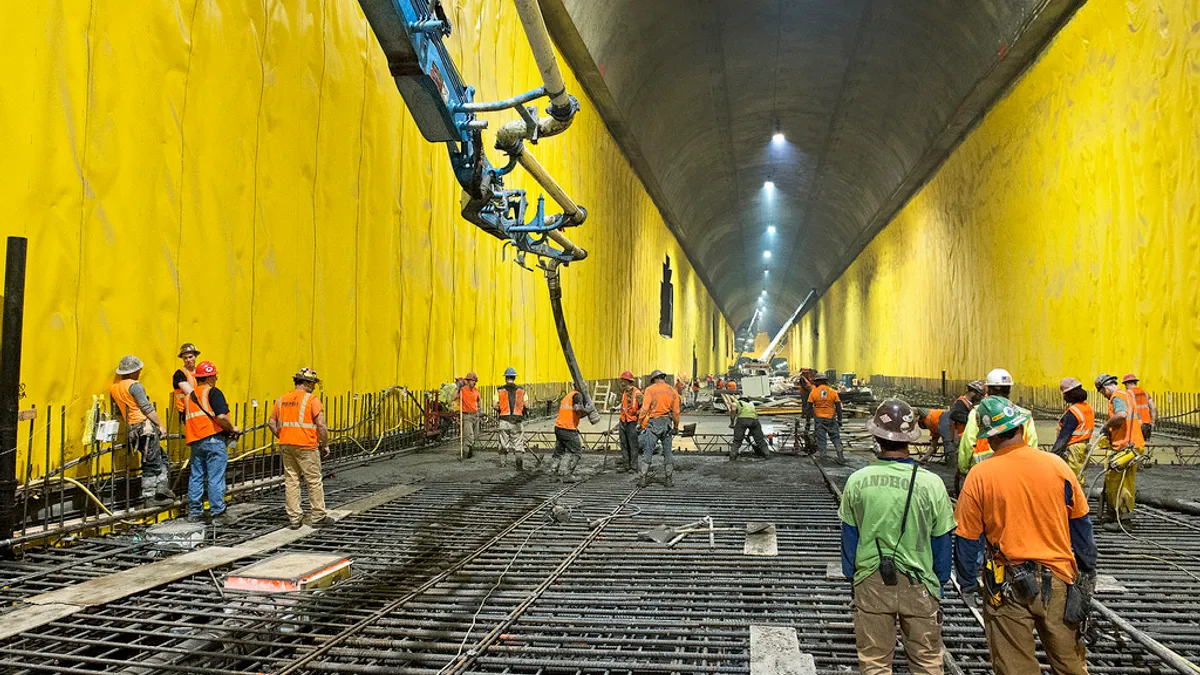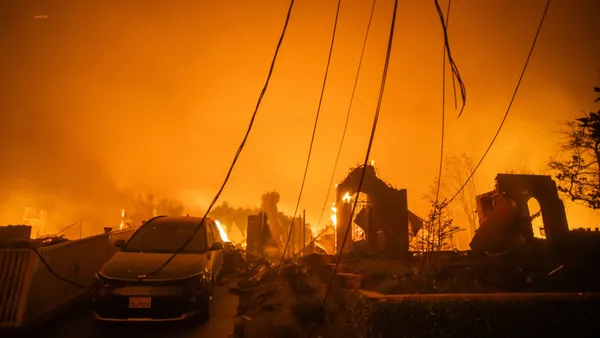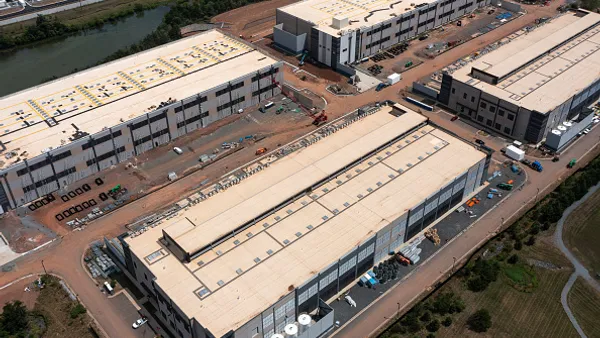Dive Brief:
- The cost of insurance coverage for New York City's $11.2 billion East Side Access tunnel has risen 557% from original cost estimates to $584 million, and critics of the state's long-time Scaffold Safety Law, which makes employers and owners responsible for "gravity-related accidents," said the regulation is to blame, according to Crain's New York Business. Metropolitan Transportation Authority documents indicate the original estimate for insurance was $93 million.
- The law, according to its opponents, has increased the incidences of personal injury payouts, causing some insurers to pull out of the market. This has made insurance more expensive for those contractors doing business in the state. The court has also expanded the scope of the law over the years, leading to more workers being able to file suit against employers. Infrastructure think tank Regional Plan Association said the law ups construction costs by an average of 7%, adding that New York is the only state that assigns "absolute liability" to employers in the case of a fall, and other groups are advocating for everyone — employee, employer, owner, suppliers — sharing the burden.
- While it's true that insurance premiums for the tunnel project have risen, onlookers said much of the increase is due to a decade's worth of project delays, and insurance costs have risen along with the extended coverage period. In addition, as part of its last insurance policy renewal, the authority has to pay a $15 million penalty to its insurer because personal injury claims exceeded the policy's $40 million cap.
Dive Insight:
While insurance costs have increased during the life of the project, there are other factors at play that would account for the $10 billion of extra costs the tunnel budget has accumulated since it was first discussed in the 1990s.
A New York Times investigation found that the tunnel's $3.5 billion per track mile cost was seven times that of similar projects in other countries. The average price per track mile in Europe, for example, is $500,000. The Times chalked this up to scarce competition, trade union agreements that required more laborers than the project actually needed and a lack of management by those public officials in charge.
Piling on is the Government Accountability Office (GAO), which plans to study the high costs of infrastructure in the U.S. with a focus on New York City.
If personal injury claims for falls is what is driving up a construction company's insurance costs, then that contractor should probably evaluate its safety program, and implement policies that will reduce the rate of accidents. Insurance companies are usually more than happy to evaluate current jobsite conditions in an effort to make jobsites safer. OSHA also offers that service free to contractors.














